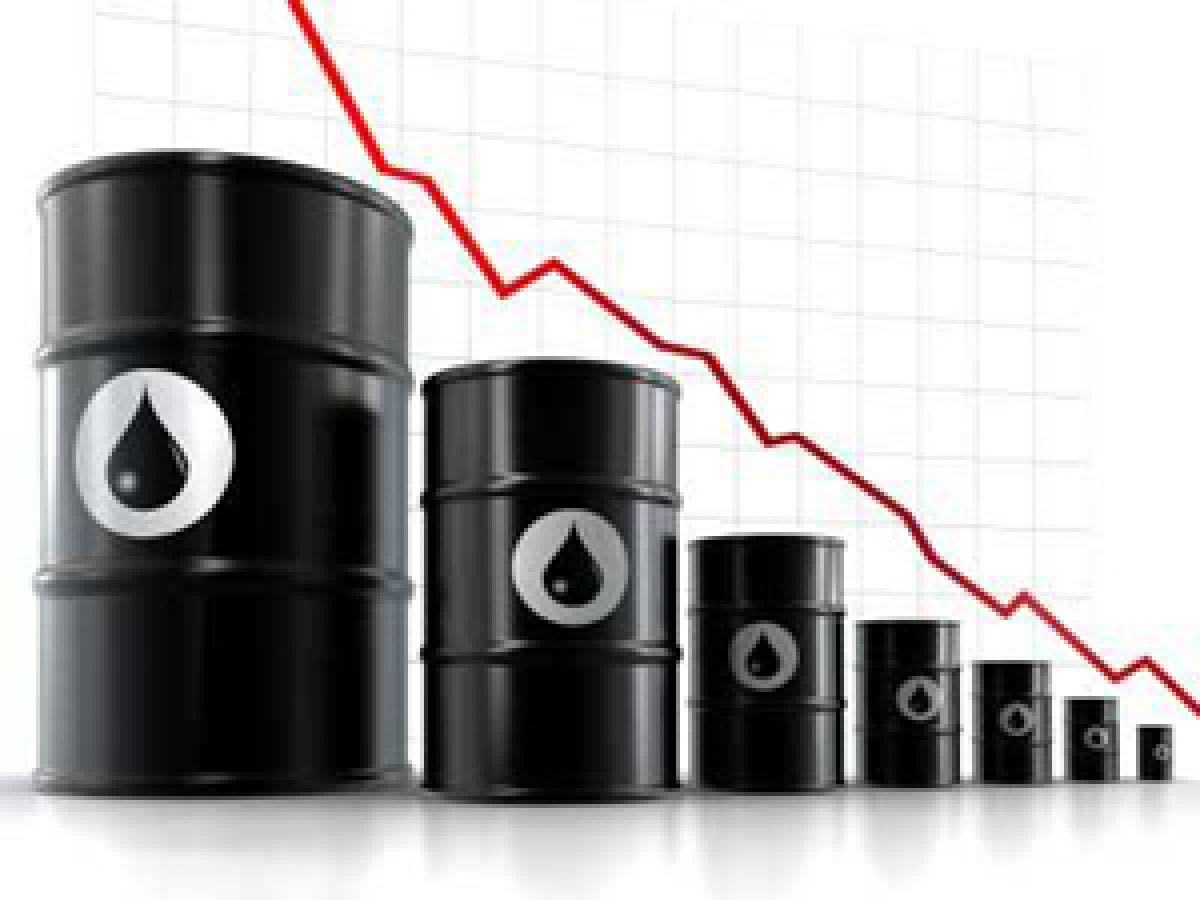Live
- Telangana Group-4 Results Declared: 8,084 Candidates Selected for 8,180 Posts
- 2024 Is Shaping Up to Be the Smallest Black Friday Ever: GoDaddy Study
- LG LAUNCHES NEW XBOOM SERIES, WITH POWERFUL SOUND WITH PORTABILITY AND STYLE
- KLH Bachupally's AI and ML Expo Hosts a Fusion of Student Innovation and Industry Expertise
- Children Should Enjoy Their Childhood and Build a Bright Future – District Judge D. Rajesh Babu
- Protest at Nagarkurnool District Collectorate Against Attack on Officials
- No Room for Corruption in Congress Government- MLC Kuchukulla Damodhar Reddy
- KVK Scientists Visit Chili Crops and Guided to Farmers
- SP Gaikwad Pays Tribute to Late IPS Pardeshi Naidu
- Secunderabad Cantonment MLA Sriganesh Celebrates Children's Day at Gaut Hill Street School
Just In

Get used to cheap oil, derivatives mkts say. Oil prices will stay low for years to come, derivatives markets say, keeping a lid on inflation and helping boost global growth.
 London: Oil prices will stay low for years to come, derivatives markets say, keeping a lid on inflation and helping boost global growth. Oil has more than halved in value over the last year, thanks to huge oversupply, and many oil companies, particularly in the United States, say they may soon have to rein in production, tightening supply, unless the market recovers.
London: Oil prices will stay low for years to come, derivatives markets say, keeping a lid on inflation and helping boost global growth. Oil has more than halved in value over the last year, thanks to huge oversupply, and many oil companies, particularly in the United States, say they may soon have to rein in production, tightening supply, unless the market recovers.
That has led many analysts to predict that oil - on average around 5 percent of companies' costs - will see price rises later this year or in 2016, pushing up inflation. But oil derivatives tell another story. Contracts for delivery of crude oil in the future on the big commodities markets such as the New York Mercantile Exchange <CME.O> and the InterContinental Exchange <ICE.N> show the price of oil in five years' time has collapsed in recent months.
US crude now costs around $42 a barrel for delivery next month, and only about $20 more for delivery in 2020. Prices of oil for future delivery are usually much more stable than volatile near-term prices, holding their value even when the spot market crashes. But the recent oil-price rout looks different. Prices for all futures months for years to come, also known as the futures price "curve", have come down sharply.
"The curve is saying prices will stay low for some time," said Amrita Sen, oil analyst at consultancy Energy Aspects. Futures prices are not forecasts, not least because liquidity tends to be low for long-term forward contracts. But they are good indicators of sentiment because they are a market where speculators bet on forward prices, and also allow large producers and consumers to hedge future business.
Analysts say the futures curve is saying the current collapse in oil prices will be sustained because it has been driven by massive oversupply that is likely to persist. Oil prices have collapsed over the last year as Saudi Arabia and other members of the Organization of the Petroleum Exporting Countries have increased production to try to protect market share from competitors such as U.S. shale oil drillers.
The global crude oil benchmark, North Sea Brent, fell to almost $45 a barrel in January from above $115 six months earlier. Prices then rallied but have since plunged towards lows not seen since the financial crisis and long recession that started in 2008/9. US oil production has risen by more than 4 million barrels per day (bpd) over the last five years, thanks to new shale extraction techniques such as "fracking", eroding OPEC's sales.
World oil production is now around 3 million bpd higher than demand, filling oil storage tanks from Houston to Huangdao. And as prices have fallen, many oil producers have hedged their future oil production using derivatives, selling futures contracts for oil that will be pumped in 2016, 2017 and beyond. This has helped pull down forward prices as nearby spot prices have collapsed, dragging the whole futures curve lower.
In 2008/9, forward futures held up fairly well. Contracts for U.S. crude oil five years ahead traded as much as $30 above prompt prices, keeping the futures curve in a steep downward slope known as a "contango". Now that slope is much less steep, with the five-year futures spread under $20.
Other derivatives paint a similar story, with aggressive oil put options - contracts giving the right to sell oil at a particular level in the future - appearing as low as $35 and even $30 a barrel for US crude. "Many analysts say oil prices can't stay this low for very long, but that is not what futures markets tell us," said Olivier Jakob at Swiss consultancy Petromatrix in Zug. "They show no recovery in prices any time soon."
By Christopher Johnson

© 2024 Hyderabad Media House Limited/The Hans India. All rights reserved. Powered by hocalwire.com







